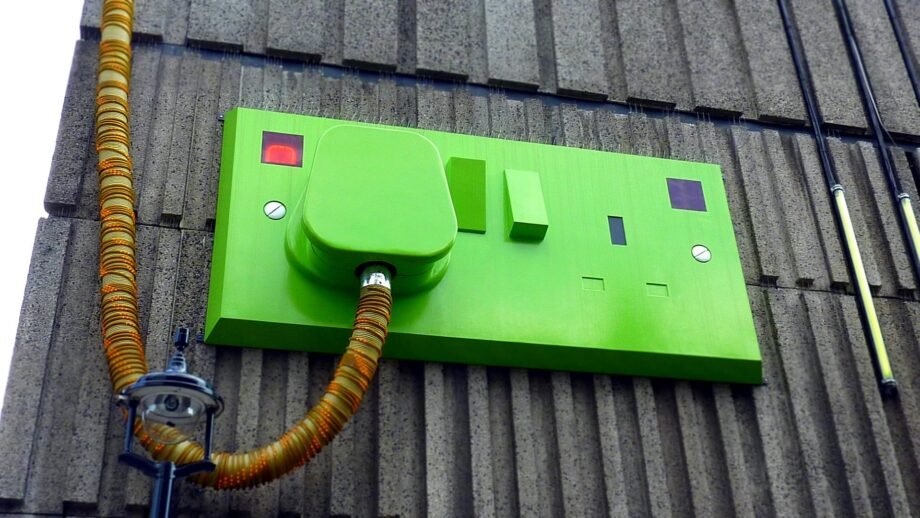🌍 A Quiet Giant in the Green Energy Race
As the world scrambles to build a cleaner, more sustainable energy future, solar and wind continue to dominate headlines. But lurking beneath our feet lies a renewable powerhouse that’s been largely overlooked—geothermal energy. More than just a heat source, geothermal is now being recognized as a game-changing solution for long-duration energy storage, making it essential for future-proofing the power grid.
While batteries have taken center stage, geothermal could offer a more scalable, sustainable, and cost-effective answer—especially when paired with artificial intelligence and hybrid systems.
🔥 What Is Geothermal Energy, Exactly?
Geothermal energy utilizes the Earth’s natural heat, typically extracted via wells drilled into underground reservoirs of hot water or steam. This energy can be converted into electricity or used directly for heating buildings, greenhouses, and even aquaculture facilities. It’s been a reliable clean energy source in places like Iceland and parts of the U.S. for decades.
But now, engineers and researchers are pushing the envelope—exploring how geothermal can store renewable energy from solar and wind for use during peak demand or periods of low generation.
⚡ How Geothermal Can Be Used for Energy Storage
The magic lies in what’s called Geothermal Pumped Heat Storage (GPHS). Here's how it works:
- Store: When excess energy is generated—say on a windy night or sunny afternoon—it’s used to heat a fluid or the subsurface reservoir itself.
- Hold: That heat remains underground, thanks to the Earth’s insulation properties.
- Retrieve: When electricity demand spikes, the heat is converted back into power using turbines.
Compared to lithium-ion batteries, this solution is longer-lasting, more environmentally friendly, and doesn’t rely on rare earth metals.

🌱 Why It’s a Perfect Fit for Renewable Storage
- Base Load + Storage: Unlike solar or wind, geothermal can generate power consistently and store excess energy.
- Minimal Land Use: Geothermal plants have a smaller surface footprint compared to solar or wind farms.
- Less Intermittency: Geothermal operates 24/7, unaffected by clouds, wind speed, or time of day.
- Supports Climate-Resilient Agriculture: In countries like Iceland, geothermal supports greenhouses and food dehydration. This could scale globally.
- Pairs Well, with AI, companies like IBM and Siemens are experimenting with AI to optimize geothermal efficiency.
🌎 Who’s Leading the Geothermal Storage Revolution?
Canada
- Alberta and British Columbia are investing in geothermal pilot projects.
- New firms are using decommissioned oil wells to tap geothermal heat—turning old infrastructure into green gold.

United States
- California and Nevada are exploring Enhanced Geothermal Systems (EGS) that inject water into hot dry rocks, expanding geothermal’s geographical reach.
- DOE-backed projects are experimenting with geothermal-as-storage systems.
Iceland
- A global leader in direct geothermal heating, Iceland is now integrating geothermal with solar and wind for national-scale energy storage.
China
- Pioneering hybrid geothermal systems in partnership with AI and smart-grid tech for rural electrification.
Australia
- Exploring basin-scale geothermal resources as part of a broader push toward net-zero emissions.
💡 Challenges Still to Tackle
- High Upfront Costs: Drilling deep wells can be expensive.
- Geographic Limitations: Not all regions are suitable for geothermal development.
- Public Awareness & Investment: Compared to solar and wind, geothermal remains underfunded and underpromoted.
Still, with advancing tech, declining costs, and global urgency, these challenges are rapidly being addressed.
🔋 Why It Matters for the Future of Energy
As solar and wind expand, the need for flexible, long-term storage solutions becomes urgent. Lithium-ion batteries are short-term answers; geothermal offers something deeper—literally and figuratively.
With the right investment and innovation, geothermal could:
- Support a resilient grid
- Drive down electricity costs
- Create green jobs in rural areas
- Stabilize intermittent renewable generation
🧭 Where to Learn More
- 🔗 Canadian Geothermal Energy Association
- 🔗 U.S. DOE Geothermal Technologies Office
- 🔗 Vestas Hybrid Energy Solutions
- 🔗 International Geothermal Association
🚀 Final Thoughts
Geothermal isn’t just an energy source—it’s an energy strategy. In a time where the green transition depends on smarter storage, geothermal may be the key to unlocking a truly sustainable future.
Let’s stop digging for fossil fuels—and start harnessing the clean heat already beneath our feet.
Want to Explore More?
Read our latest piece: Green Technologies of the Future: Which Developments Will Save the World?.
Comment below: What’s your take on the environmental cost of green tech?
Tag us on social media using #GreenTechRealityCheck
nature.com+7thenevadaindependent.com+7lithiumharvest.com+7
Have questions or thoughts? Comment below and let us know what more you’d like to learn about green technology—we’d love to hear from you!








